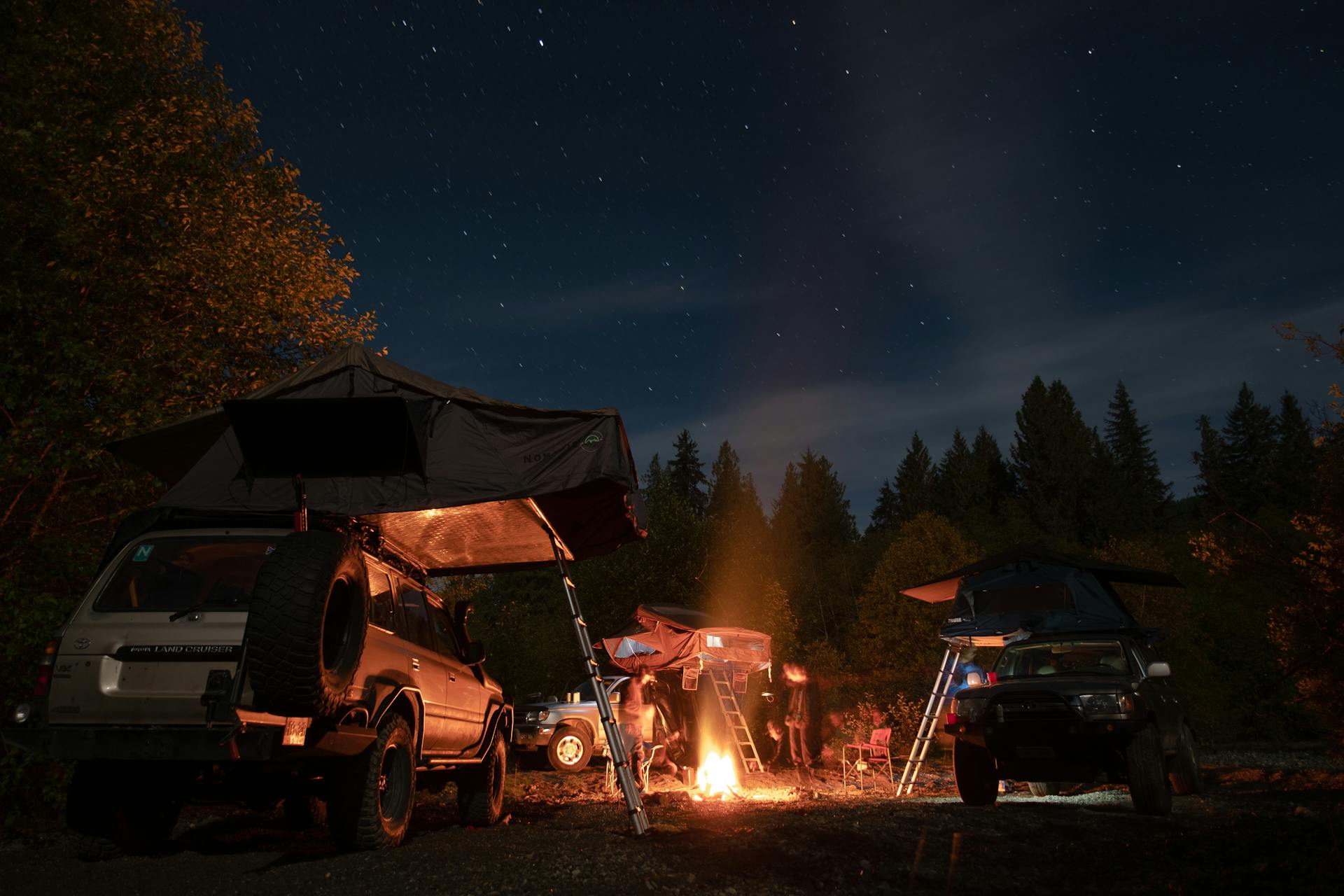Camping offers an unmatched opportunity to disconnect from the digital world and reconnect with nature. But what happens when traffic delays or unexpected events cause you to arrive at your campsite long after sunset? Arriving late can be challenging, but with the right preparation and mindset, it can turn into an adventure worth remembering. This guide provides practical solutions for setting up camp safely and efficiently when you arrive at a campground at night.
Preparing for a Nighttime Arrival
1. Call the Campground Ahead of Time
Before leaving for your trip, always contact the campground office or ranger station. Many campgrounds have specific procedures for after-hours arrivals. Knowing these beforehand can save you time and stress. Key questions to ask include:
- Is there an after-hours check-in process?
- Will the gate be locked, and if so, how can it be accessed?
- Are there designated late-arrival parking areas?
Keep a written or offline copy of their phone number handy in case you lose cellular service during your journey.
2. Pack for Quick Access
Ensure that essential items are easily accessible. Pack the following at the top of your bag or in a separate compartment:
- A headlamp or flashlight with fresh batteries
- Tent, tarp, or footprint
- Sleeping bag and mat
- Pillow and nighttime clothing
- Toiletries and any medications
- A portable lantern
3. Practice Setting Up Your Tent at Home
Fumbling with an unfamiliar tent in the dark can be frustrating. Practice assembling your tent in daylight before your trip. Familiarity with the process will make setup quicker and less stressful when visibility is low.
4. Print a Park Map
Download and print a copy of the park’s map. This ensures you’ll have a reliable navigation tool even if your GPS or phone fails. Highlight important locations like your reserved campsite, parking areas, and restrooms.
Tips for Setting Up Camp in the Dark
1. Arrive Quietly
When you pull into the campground, be mindful of fellow campers who may already be asleep. Turn off your car’s high beams and keep your voice and music volume low. Check the posted quiet hours and respect them.
2. Locate Your Campsite
Use your headlamp or flashlight to navigate to your designated campsite. If you don’t have a reservation, look for available sites. Walk around with your light to assess the area for flat, debris-free ground and proximity to amenities like water or restrooms.
3. Prioritize Essential Setup
Start with the basics to ensure you have a comfortable and safe place to sleep:
- Clear the Tent Area: Remove rocks, sticks, or other debris from the site.
- Lay the Tarp: Place a tarp or footprint to protect your tent floor from moisture and damage.
- Assemble the Tent: Follow the steps you practiced at home. Anchor it securely to avoid surprises from wind or animals.
- Set Up Lighting: Use a lantern or hang a headlamp inside your tent for ambient lighting. Opt for a red-light setting to preserve night vision and avoid attracting bugs.
4. Secure Food Properly
Wild animals can be attracted to food odors. Store food in a bear-proof container or hang it from a tree at least 10 feet off the ground and 4 feet away from the trunk.
Safety Tips for Night Camping
1. Stay Visible
Wear reflective clothing or use glow sticks to make yourself visible to others in the dark, especially if you’re walking near roads or trails.
2. Be Aware of Wildlife
Nighttime increases the likelihood of encountering wildlife. Keep a safe distance and avoid shining lights directly at animals. Carry bear spray or a whistle as a precaution in areas known for larger predators.
3. Use Your Senses
Your hearing and smell can be valuable tools at night. Listen for running water, distant voices, or rustling to help orient yourself.
Extra Tips for Enjoying the Nighttime Experience
Arriving late doesn’t mean you can’t enjoy your first night. Here are some activities to make the most of it:
1. Stargazing
Take advantage of the dark skies to enjoy stargazing. Use a stargazing app to identify constellations and planets.
2. Night Hike
If it’s safe and permitted, go for a short night hike. The sounds and sights of nature at night can be mesmerizing.
3. Evening Snacks
Prepare simple, no-cook snacks to enjoy before bed. Trail mix, granola bars, or fruit are convenient and require no cleanup.
Checklist for a Smooth Late Arrival
Before You Leave:
- Call the campground to confirm after-hours procedures.
- Practice setting up your tent.
- Pack essential items in an accessible location.
- Print the park map.
On Arrival:
- Drive quietly and respect quiet hours.
- Use a flashlight or headlamp to navigate.
- Prioritize setting up your tent and securing food.
- Be cautious of wildlife.
During Your Stay:
- Enjoy the unique aspects of nighttime camping.
- Keep safety a priority.
Conclusion
Arriving at a campsite at night can seem daunting, but with preparation and a calm approach, it can become a memorable part of your adventure. By following these tips, you’ll be able to set up camp efficiently, stay safe, and even enjoy the unique beauty of the night. So pack your gear, plan for contingencies, and embrace the thrill of camping after dark!

